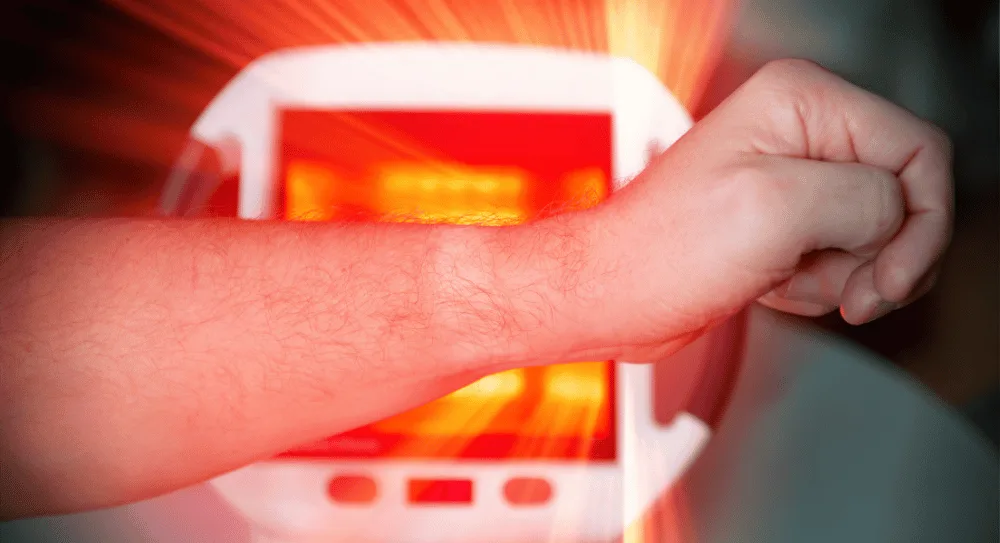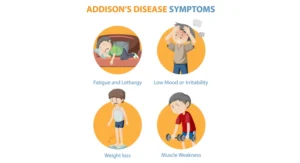Red Light Therapy for Treating Blood Clots
By TOI Staff
April 28, 2023
Update on : April 28, 2023

Maintaining adequate blood flow is a crucial component of a healthy lifestyle. Conditions like diabetes and heart disease almost universally have poor circulation as a side effect. In this article, we’ll talk about how important good circulation is and what simple steps you can take to improve it and your overall health. We will also discuss how red light therapy can play a role in ensuring healthy blood flow.
The Circulatory System: A Crucial Part of Our Body
The cardiovascular system, also called the circulatory system, moves blood around the body and brings oxygen and nutrients like amino acids and salts to the cells. Every single one of your cells needs food, oxygen, and hormones, all of which come from your blood system. The heart is at the center of the circulatory system, pumping blood to the body’s organs and muscles, while the lungs are at the center of the respiratory system, delivering oxygen to the blood.
The arteries and veins make up the two ‘highways’ of the circulatory system. Blood is pumped out of the heart through arteries and returned through veins. A steady blood flow brings food to cells, which helps prevent disease, keeps the pH and temperature of the body stable, and keeps homeostasis in place.
Blood Flow and Its Importance
It’s all about blood flow and is more crucial than you believe. As was noted, blood circulation is crucial to the proper functioning of our body. To heal and deal with inflammation, this is a must. If your blood flow isn’t good, you might feel tired, have pain in your muscles, have pale skin, be numb, or have trouble with your blood clotting. Wounds may also take longer to heal.
You can’t say enough about how important it is to keep blood flowing normally throughout your body. Poor circulation is linked to many serious health problems, like heart disease and diabetes. Changes in diet, more physical activity, and learning how to deal with stress are the usual suggestions for people with this problem.
While many of these would be worth a shot due to their overall favorable effects, red light therapy, in particular, has been shown to increase blood flow significantly. The body’s innate recuperative abilities rely heavily on a steady supply of oxygenated blood. Because they are oxygen-rich, the red blood cells your circulatory system carries to wounds aid in forming new blood vessels, speeding the healing process. Most of the time, poor or limited blood flow is to blame for chronic wound problems. This makes it hard for the body’s circulatory system to heal wounds, injured areas, or contaminated areas when the body is under attack. During an inflammatory response, the blood vessels get bigger, so more blood can rush to the injured area.
Signs of Low Blood Flow
Signs of impaired circulation typically manifest in the limbs. Sensations of tingling, numbness, throbbing, or stinging in the limbs are typical of poor circulation. Weak blood flow might sometimes manifest as pain or muscle cramps. Reduced blood flow is a potential contributor to erectile dysfunction in some men.
Blood Clots: An Affect of Low Blood Flow
Poor circulation is not a medical condition in and of itself, but it is a common side effect of many others, such as obesity, diabetes, heart disease, peripheral artery disease, atherosclerosis, and blood clots. Circulation might deteriorate with time due to smoking and a lack of exercise. To restore normal blood flow, one must treat not just the symptoms but also the underlying causes.
Coagulation, the process by which blood clots occur when a blood vessel is broken, is a very important way to stop too much bleeding. The blood clot will disintegrate on its own after the damage has healed. However, clots can also form in the inner veins without external bleeding. This is problematic because a blood clot in the vein can prevent blood from flowing back to the heart, leading to discomfort and possible organ damage. Deep vein thrombosis (DVT) is a severe condition in which a blood clot forms in a major vein of the leg or, less frequently, in the arms, pelvis, or other large veins in the body. It is possible for a blood clot to break away from its original vein, travel through the heart, and lodge in one of the lungs, blocking blood flow. A pulmonary embolism describes this condition, which can be fatal.
Light Therapy to Deal with Blood Clots and Improve Circulation
Red light therapy treatments are helpful because they are part of a healthy, well-rounded lifestyle that can boost the performance of cells. Improved circulation can result from several factors, including regular exercise, a balanced diet, and quality sleep.
In order to treat a wide variety of conditions, several light hues must be used in light therapy. Red light treatment, however, can help with everything from insomnia to muscle soreness to skin issues.
During this therapy, a red light therapy device is used to send low-wavelength red and near-infrared light into the skin. This light helps cells repair and renew themselves. As we’ve already shown, it’s a great alternative to surgery or medicine for several health problems, including poor circulation. This method doesn’t use invasive surgery. Instead, the patient is treated from the inside out, starting with the cells.
How Light Therapy Enhances Blood Flow
Red light therapy, a healthy diet, regular exercise, and enough rest can speed up the healing process in a natural way. Red light increases blood flow, brings more oxygen to areas that need it, and removes harmful waste products of metabolism.
This is because the heat and the short wavelength light might affect the body on a cellular level and promote regeneration. Every day, even just 10 minutes of exposure to the sun can have a profound effect on how your body functions. While red light treatment has many positive effects, it should not be seen as a silver bullet for your health problems.
Benefits of red light therapy include improved blood flow after treatment. This means more healing nutrients like oxygen are reaching the tissues. Light also helps the body’s circulatory system eliminate waste that could be harmful to it.
Final Words
Maintaining a healthy circulatory system can reduce the risk of developing several chronic diseases and contribute to a lifetime of good health. Regular exercise and a healthy diet can help improve circulation, as can limiting harmful habits like smoking and drinking. Making sure you expose yourself to light every day can help you keep a healthy, well-balanced circulatory system. Also, simple red light therapy can help you get the light you need for healthy circulation. You can prevent and treat blood clots by maintaining a healthy blood flow. This way, you can make sure that your blood has a healthy flow inside your body and that you are safe from blood circulation-related issues.
















